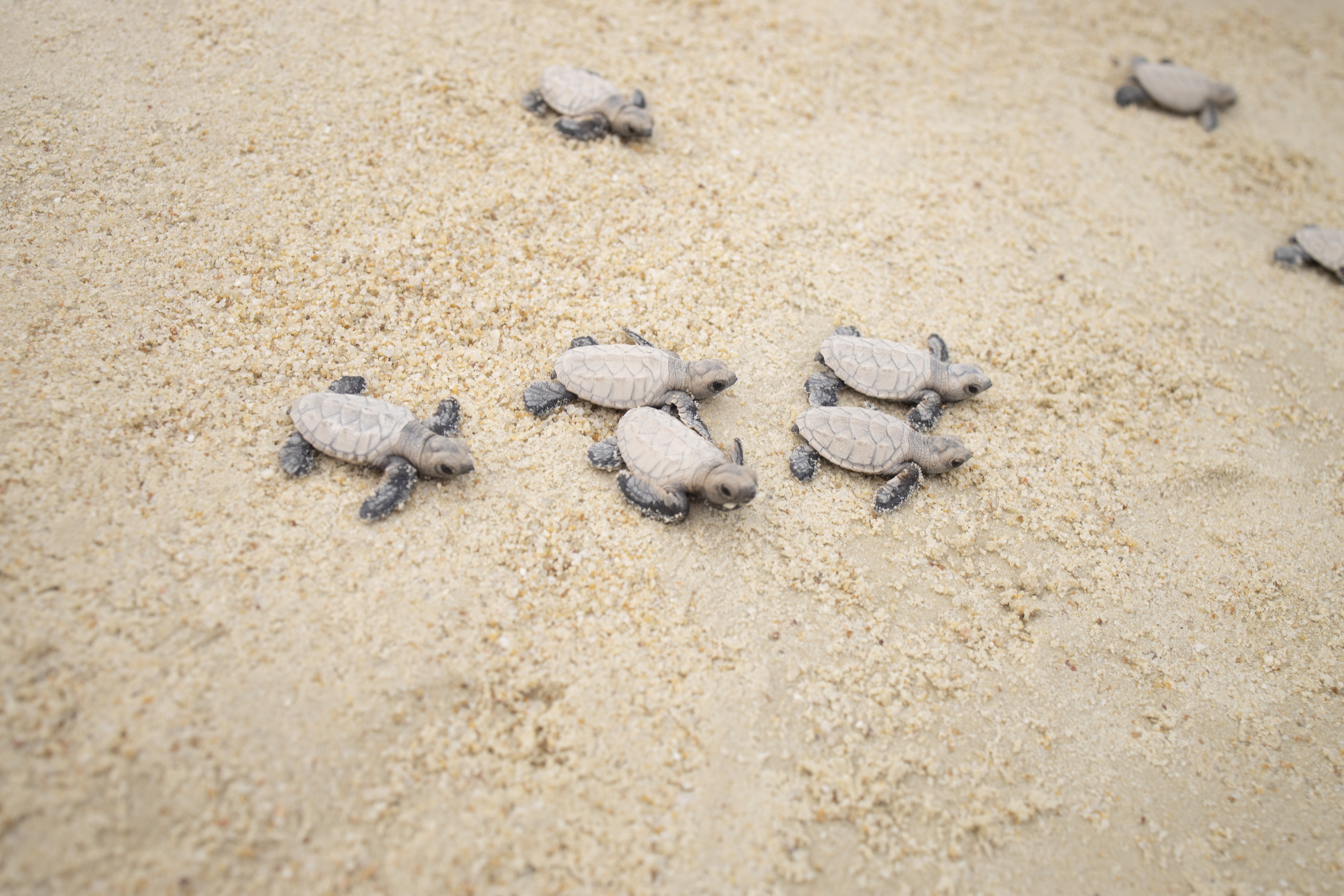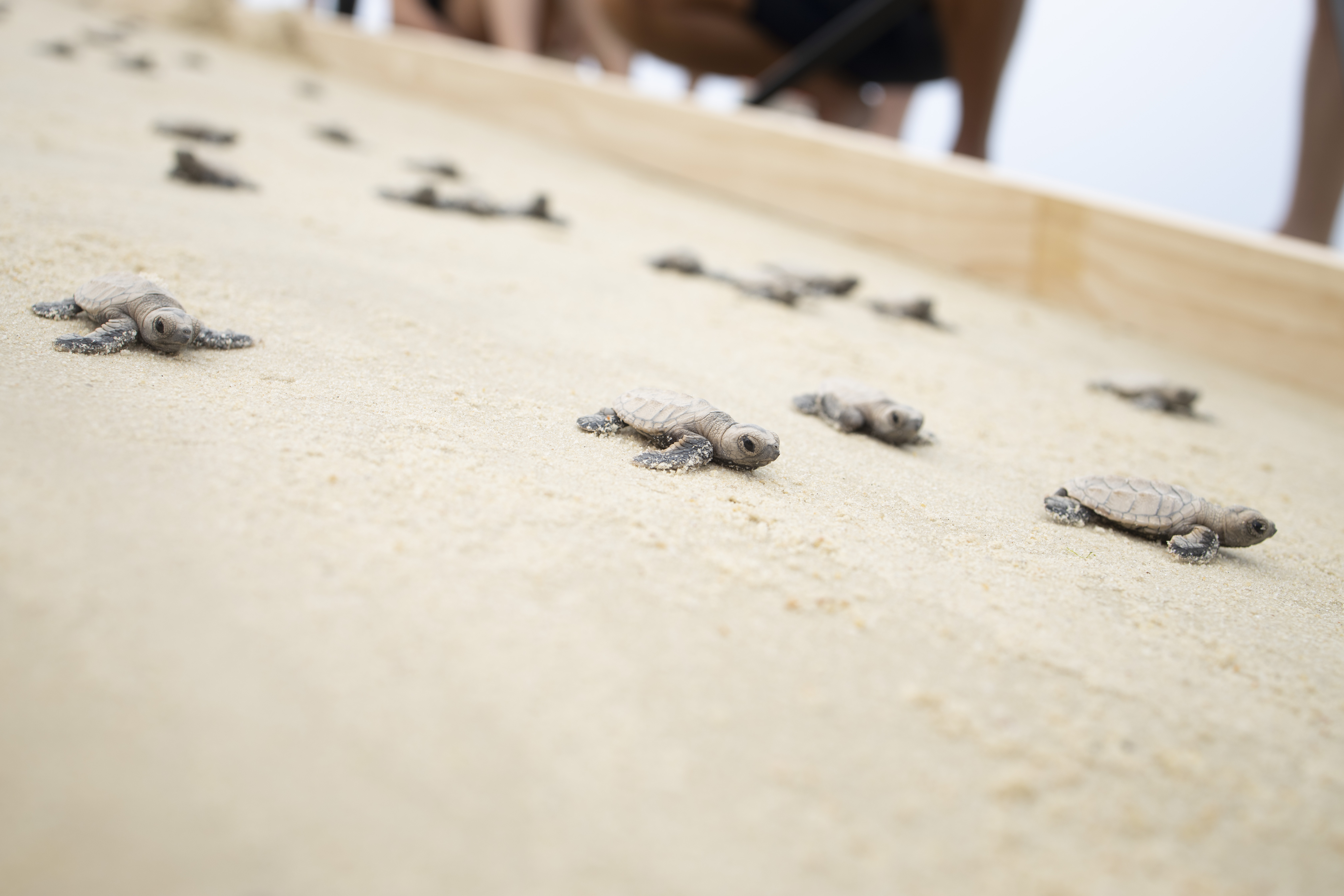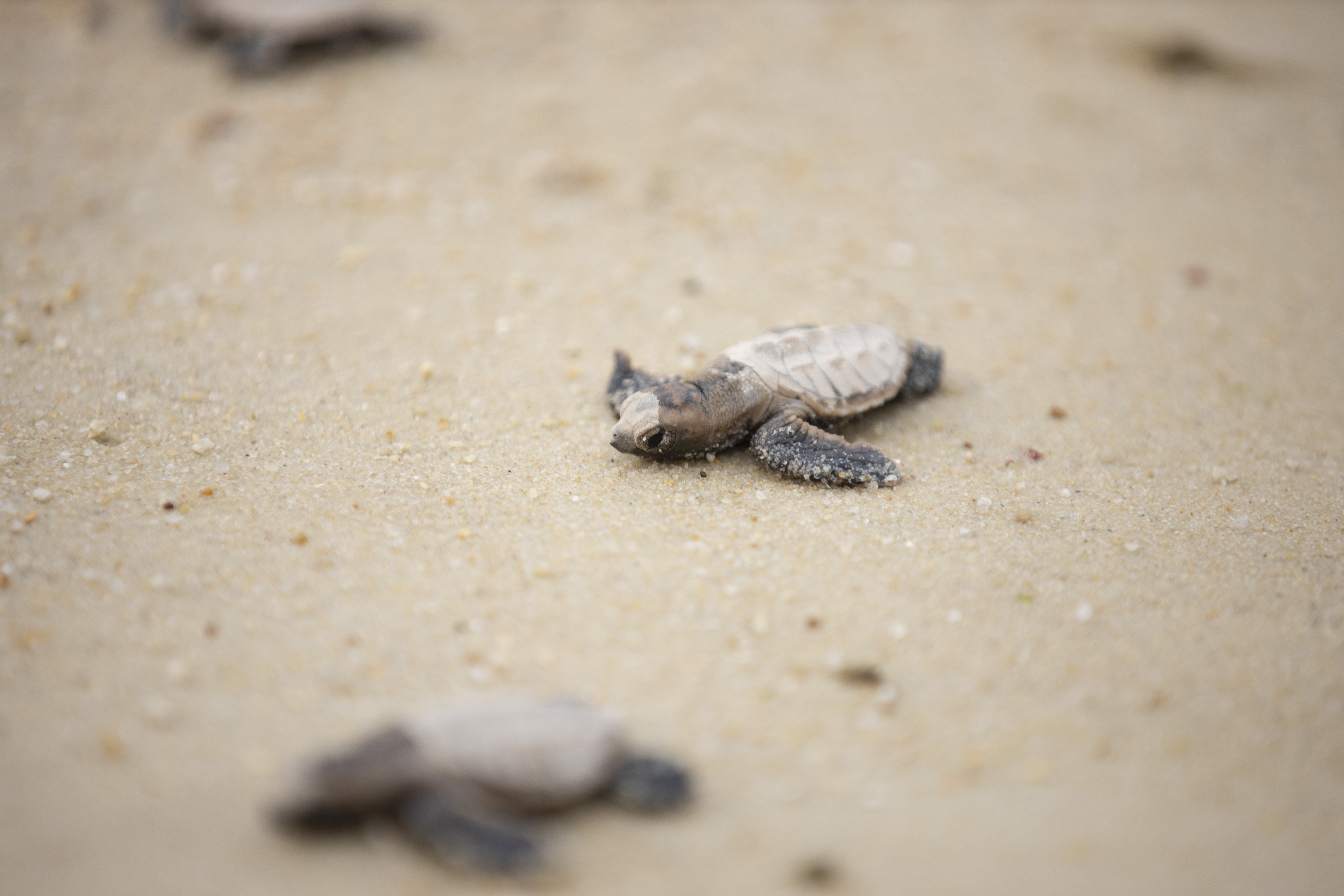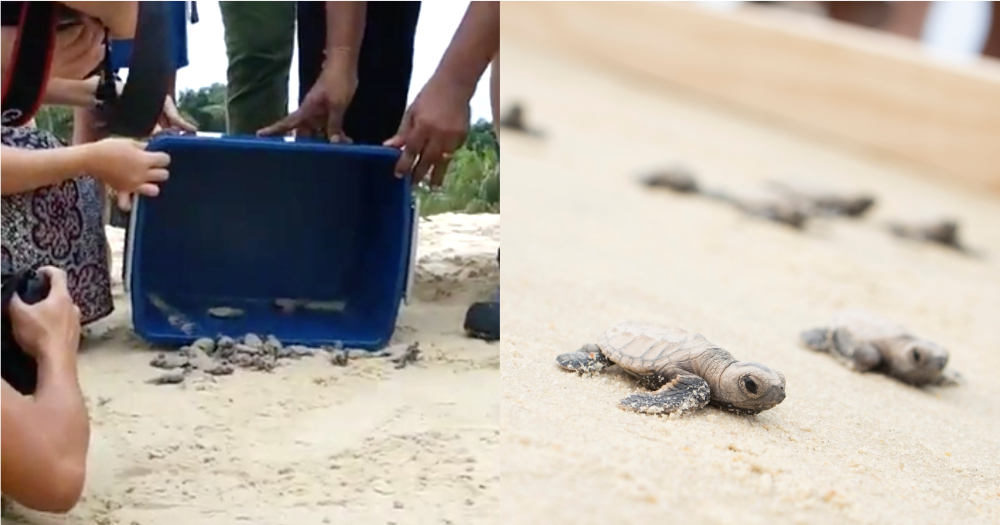Some adorable turtles are seeing the world for the first time on Sept. 4 morning -- as they greeted the world on Singapore's shores.
 Photo from Sentosa Development Corporation.
Photo from Sentosa Development Corporation.
100 Hawksbill turtles hatched on Sentosa
Some 100 critically endangered hawksbill turtle eggs hatched on Sentosa on Sept. 3, at around 10pm.
According to a Sentosa Development Corporation (SDC) spokesperson, a Hawksbill turtle nest was discovered at Tanjong Beach on July 14, 2019.
SDC then set up a protective barrier around the nest that day to ensure the mother turtle can incubate the eggs at ease, without being threatened by predators, such as monitor lizards and crabs.
SDC also worked with National Parks Board (NParks) to conduct checks during this period.
The eggs finally hatched after 51 days.
The team had to take measurements and conduct checks on the turtle hatchlings before releasing them on Sept. 4 at around 7am.
Some members of the public were lucky enough to witness the hatchlings crawling into the sea from Tanjong Beach.
https://giphy.com/gifs/lT5IOs1su2Lavw60Dt
For those who missed it, you can view the happenings via this video:
5th time eggs of Hawksbill turtle hatched on Sentosa
This is the fifth time since 1996 that eggs of the critically endangered Hawksbill turtle have hatched on Sentosa.
 Photo from Sentosa Development Corporation.
Photo from Sentosa Development Corporation.
 Photo from Sentosa Development Corporation.
Photo from Sentosa Development Corporation.
Previous turtle hatchlings were also recorded in 2010, January 2018 and September 2018 at Tanjong Beach.
Earlier last month, 44 Hawksbill turtles were hatched on Sisters' Islands too.
What to do if you see a Hawksbill turtle?
Here's an advisory from NParks if you ever see a nesting Hawksbill turtle:
- Call NParks at 1800-4717300/ SDC 1800-SENTOSA (7368672)
- Keep your distance from the turtle and the eggs. Touching the turtle may scare or provoke it. Handling the eggs may damage them, or introduce bacteria into the nest.
- Talk softly and stay out of sight. Do not shine lights at the turtle or use flash photography. Light and noise may scare the turtle, and cause it to leave without laying any eggs.
- Keep clear of tracks left by the turtle. Researchers use the tracks to identify the species of the turtle and to locate the nest.
Top photo collage from Sentosa Facebook and SDC's photo
If you like what you read, follow us on Facebook, Instagram, Twitter and Telegram to get the latest updates.
